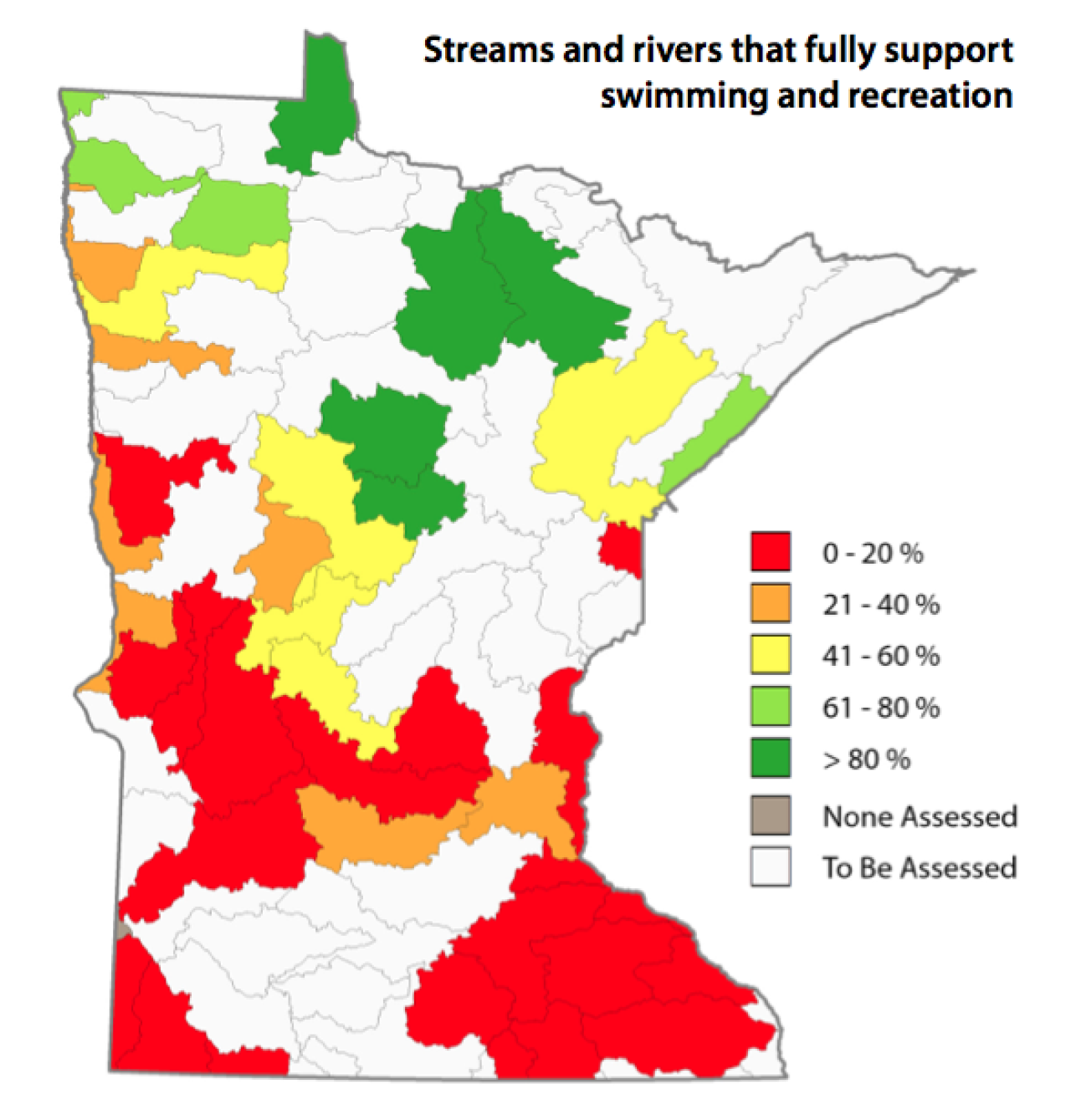Did Minnesota's watersheds just fail their midterms?

Late last month, the state of Minnesota released a new report on the quality of Minnesota's waters. The report, Swimmable, fishable, fixable? What we’ve learned so far about Minnesota waters", marks the midpoint in the State's 10-year plan to assess the status of our 81 major watersheds.
Statewide check-up for Minnesota's waters
Following adoption of the Clean Water, Land and Legacy Amendment in 2008, the Minnesota Pollution Control Agency (MPCA) began conducting a full assessment of water quality conditions in each of Minnesota's 81 watersheds once every 10 years.
At the 5-year mark, the state has fully assessed about half of Minnesota's watersheds. The "midterm" results show that about half of the waters tested so far are unfit for safe swimming and fishing.
The MPCA's monitoring and assessment work reveals some troubling, if not surprising, results:
- Half or fewer of the waters in agricultural and heavily urban watersheds fully support aquatic recreation, mostly due to phosphorus from wastewater and agriculture.
- Areas high in cropland acres show the highest levels of nitrogen, phosphorus and sediment pollution, which can harm aquatic life, recreation and pollute drinking water.
- Watersheds with a lot of dense development or agricultural feedlots are most often polluted with excess bacteria, which can be dangerous for humans and pets recreating in our lakes and streams.
- The general pattern is that water quality is exceptionally good in the northeast part of the state and declines moving toward the southwest.
While it is no secret that agriculture remains the largest source of pollution to the metro Mississippi River and other waters throughout the state, the report rekindles critiques of Minnesota's current voluntary agricultural pollution management approach.
How much change is enough?
The report highlights strategies necessary to achieve clean water in several watersheds throughout the state. For example, in southern Minnesota's heavily-farmed Le Sueur River Watershed, the report notes that achieving water quality goals requires a 25% reduction in river flows (average water volume) in addition to other reductions in nutrient, sediment and bacteria pollution.
Achieving these goals will require all of the following changes to conservation and land use practices:
- 71,000 acres of farmland using conservation tillage
- 28,000 acres of farmland using cover crops each year
- 18,000 acres of farmland using water and sediment basins and terraces
- 18,000 acres of farmland runoff treated by practices in or near ditch systems
- 17,000 acres of farmland runoff additional conservation land cover
- 14,000 acres of farmland draining to grassed waterways
- 11,000 acres of farmland draining to saturated buffers
- 7,100 acres of farmland runoff treated in conservation drainage systems
- 7,100 acres of farmland draining to treatment wetlands restored wetlands
- 1,400 acres of restored wetlands
In total, more than 192,000 acres in this 712,000-acre watershed will require water quality treatment of some kind. Capturing and treating pollution from so many acres of farmland is a challenge, especially when cropland runoff and drain tile effluent are exempt from regulation under the Clean Water Act.
That's one more reason why FMR believes it is essential to pass Governor Dayton's buffer initiative.
While vegetative buffers won't completely solve the problem, our state's poor midterm scores suggest that we're not going to achieve clean water until all our waters are protected with buffers, in addition to landscape-scale cropping, tillage and drainage reforms in our agricultural areas.
Mercury
The report also reminds us that mercury pollution remains prevalent in Minnesota's waters. 97% of rivers and streams, and 95% of Minnesota lakes are considered impaired for fish consumption due to excess mercury in fish tissue. While fish are an important part of a healthy diet, anglers interested in eating fish caught in Minnesota should always follow the Minnesota Department of Health fish consumption advice.
Where to learn more
For more information about the report, download the MPCA's Swimmable, fishable, fixable? What we’ve learned so far about Minnesota waters" report or visit the MPCA's website.